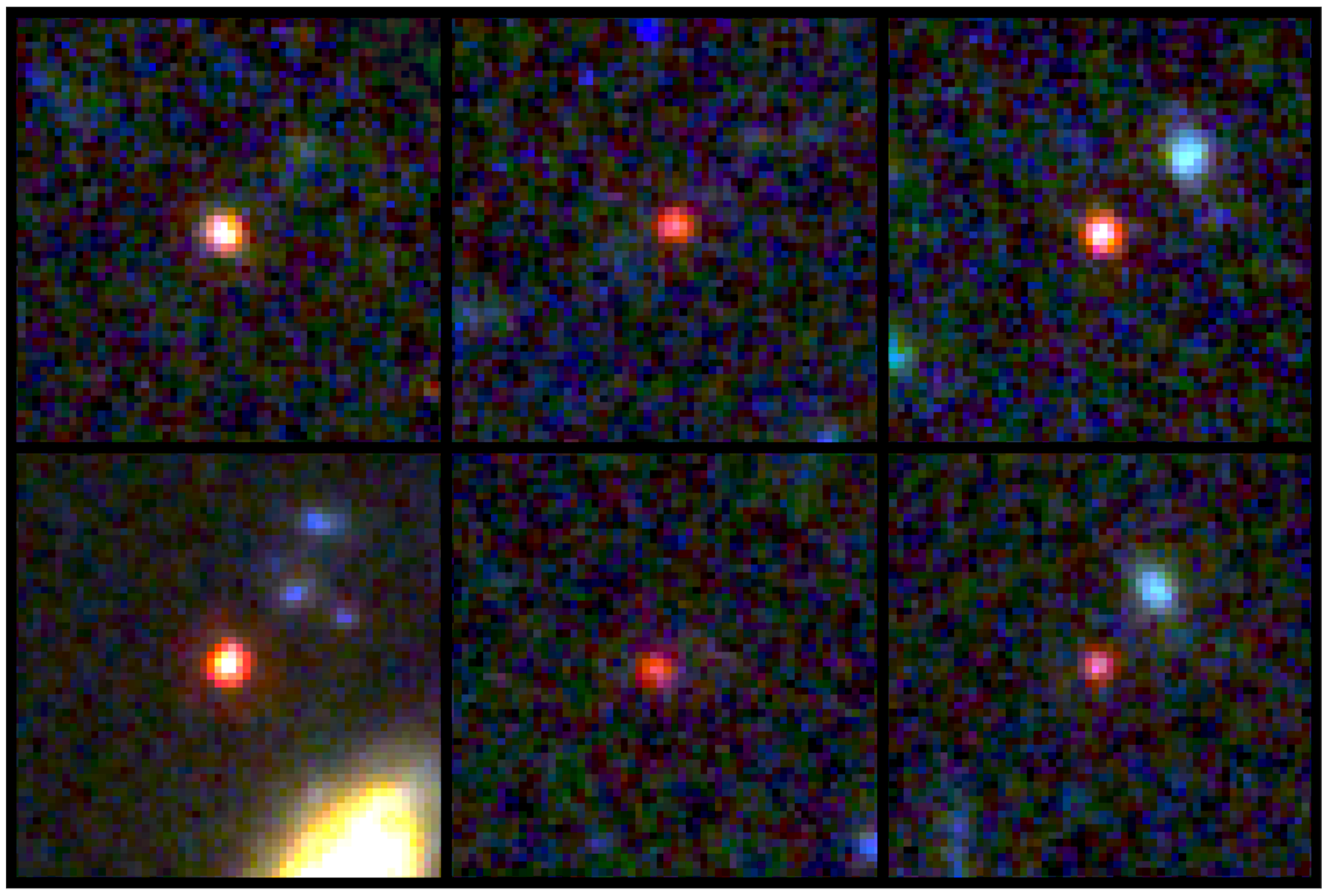
Nobody expected them. They were not supposed to be there. And now, nobody can explain how they had formed.
Galaxies nearly as massive as the Milky Way and full of mature red stars seem to be dispersed in deep field images obtained by the James Webb Space Telescope (Webb or JWST) during its early observation campaign, and they are giving astronomers a headache.
These galaxies, described in a new study based on Webb’s first data release, are so far away that they appear only as tiny reddish dots to the powerful telescope. By analyzing the light emitted by these galaxies, astronomers established that they were viewing them in our universe’s infancy only 500 million to 700 million years after the Big Bang.
Such early galaxies are not in themselves surprising. Astronomers expected that first star clusters sprung up shortly after the universe moved out of the so-called dark ages — the first 400 million years of its existence when only a thick fog of hydrogen atoms permeated space.
Related: 12 amazing James Webb Space Telescope discoveries across the universe
But the galaxies found in the Webb images appeared shockingly big, and the stars in them too old. The new findings are in conflict with existing ideas of how the universe looked and evolved in its early years, and don’t match earlier observations made by Webb’s less powerful predecessor, the Hubble Space Telescope.
“We had specific expectations for the type of galaxies that live in the early universe: they are young and small,” Joel Leja, assistant professor of astronomy and astrophysics at Penn State and one of the authors of the study, told Space.com in an email. “Previous studies of the early universe with Hubble and other instruments tend to find small, blue, baby galaxies at early times: objects which have just recently formed out of the primordial cosmic soup and are themselves building their early stars and structures.”
Young stars in general shine bright blue. With age, stars develop a redder glow as they burn through their fuel and cool down. In ancient galaxies that Webb was built to spot, astronomers had not expected to see old red stars. They also had not expected to find galaxies more massive than perhaps a billion suns. But those reddish dots revealed in Webb’s deep fields appear 50 times more massive than that, Leja said.
“The most massive galaxies in our sample are estimated to have masses [two to four times lower] than that of our own Milky Way,” Leja wrote. “This was astounding — we’re finding galaxy candidates as massive as our own galaxy when the universe was 3% of its current age.”
Leja said that before astronomers start rewriting cosmology theories to explain how these galaxies came together so quickly after the Big Bang, they will have to ensure the odd red dots they are looking at are not something else. Most of the alternative explanations, however, also require entirely new concepts, Leja said.
“For example, stars in the early universe might emit light in exotic ways due to their lack of heavy elements, and perhaps we’re not incorporating those in our models,” Leja wrote. “Or alternatively, perhaps our understanding of how stars form locally, e.g. how many stars form from gas as a function of the mass of the stars, is totally inapplicable in the early universe. These things would also be exciting to discover and would also overturn our understanding of star formation in the early universe — just in a very different way.”
The images that revealed these puzzling galaxies were obtained by Webb’s Near Infrared Camera (NIRCam) as part of the Cosmic Evolution Early Release Science (CEERS) program. Astronomers plan to soon turn Webb’s mirror to these galaxies again to, this time, obtain light spectra of those distant dots. Spectra break down the observed light according to its wavelength composition and thus reveal the chemical and physical properties of its source.
“The most important thing is that spectra give very precise distances to these objects,” said Leja. “The “distance” and the “identity” of these objects is correlated: if we know the distance, we can pin down the identity, and vice versa. So a spectrum will pretty immediately tell us if our hypotheses are correct.”
Only a little more than six months after the Webb team released the first observations from the grand observatory, scientists are already challenged to rewrite their theories about the early universe.
“We looked into the very early universe for the first time and had no idea what we were going to find,” Leja said in a Penn University statement.
“It turns out we found something so unexpected it actually creates problems for science. It calls the whole picture of early galaxy formation into question.”
The study was published in the journal Nature on Wednesday (Feb. 22).
Copyright 2023 Space.com, a Future company. All rights reserved. This material may not be published, broadcast, rewritten or redistributed.
